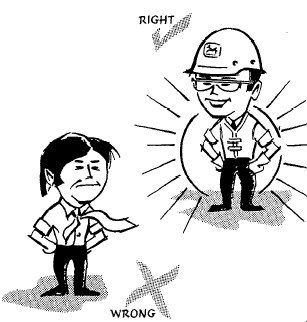MAINTENANCE WITHOUT ACCIDENT WORK SAFELY
SAFETY SYMBOL
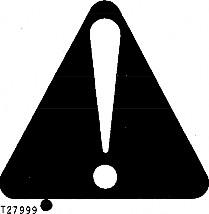
This safety alert symbol identifies important safety messages in manuals. When you see this symbol, be alert to the possibility of personal injury and carefully read the message that follows.
EVERY EMPLOYER HAS A SAFETY PROGRAM. KNOW WHAT IT IS!
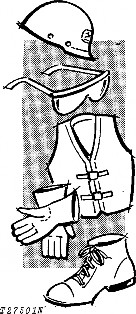
Consult your shop foreman for specific instructions on a job, and the safety equipment required. For instance, you may need: Hard hat, safety shoes, safety goggles, heavy gloves, reflector vests, ear protectors, respirators.
BE ALERT!
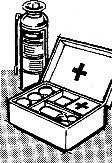 Pan ahead-work safely-know how to use a first-aid kit and a fire extinguisher-and where to get aid and assistance.
Pan ahead-work safely-know how to use a first-aid kit and a fire extinguisher-and where to get aid and assistance.
Store starting aids in a cool and well-ventilated place, out of the reach of unauthorized personnel.
Maintenance Area
Make sure the maintenance area is adequately vented. Keep maintenance area CLEAN AND DRY. Oily and wet floors are slippery; greasy rags are a fire hazard; wet spots are dangerous when working with electrical equipment.
AVOID FIRE HAZARDS – Fuel Is Dangerous!
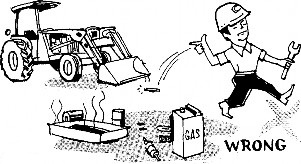
Don’t smoke while refueling.
Don’t smoke while handling highly flammable material.
Engine should be shut off when refueling.
Use care in refueling if the engine is hot.
Don’t use open pans of gasoline or diesel fuel for cleaning parts. Good commercial, nonflammable solvents are preferred.
Battery Gas Is Highly Flammable!
Provide adequate ventilation when charging batteries.
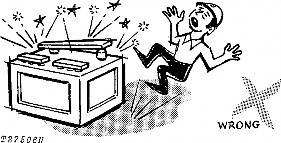
Don’t check battery charge by placing metal objects across the posts.
Don’t allow sparks or open flame near batteries.
Don’t smoke near battery.
Flame Is Not a Flashlight!
NEVER USE OPEN FLAME AROUND THE MACHINE.
KNOW WHERE FIRE EXTINGUISHERS ARE KEPT!
UNDER ALL MAINTENANCE CONDITIONS
Do not perform any work on the equipment unless’ authorized to do so. Then be sure you know the safe and proper procedure.
Follow recommended procedures.
Never service the equipment while it is being operated.
Avoid working on equipment with the engine running.
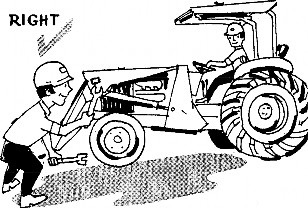
If it is necessary to make checks with the engine running, ALWAYS USE TWO service technicians one, the operator, at the controls, the other checking within sight of the operator.
KEEP HANDS AWAY FROM MOVING PARTS
Support all raised equipment. Never work under raised bucket. Lower bucket to ground.
If the machine is on an incline, block it securely.
Use hoisting equipment for lifting heavy parts.
TAKE CARE! WATCH OUT FOR OTHER PEOPLE IN THE VICINITY
Wear safety glasses when drilling, grinding, or hammering metal.
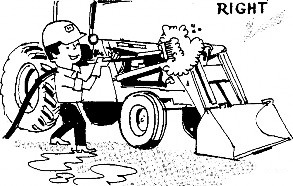
Keep ALL equipment free of dirt and oil.
Be sure to clean any oil, grease, mud, ice, or snow from floor of operator’s compartment and stepping points.
When preparing the engine for storage, remember that inhibitor is volatile and therefore dangerous. Seal and tape openings after adding the inhibitor. Keep container tightly closed when not in use.
Don’t remove the radiator cap until coolant temperature is below the boiling point. Then loosen cap slowly to the stop to relieve pressure before removing.
Periodically check exhaust system for excessive leakage.
Relieve hydraulic pressure before working on hydraulic system: shut off engine, lower bucket to ground, and move control levers and steering wheel until no response is felt.
When checking hydraulic pressure, be sure to use the correct test gauge.
Before working on hydraulic system relieve hydraulic pressure.
Before repairing the electrical system, or performing a major overhaul, disconnect batteries.
KNOW EQUIPMENT IS READY!
Check guards, canopies, safety guards – all protective devices installed on the unit. Every one should be in place and secure.
CHECK IT OUT!
1 GUARDS
2 CANOPIES
3 SHIELDS
4 PROTECTIVE DEVICES
5 ROLL-OVER PROTECTIVE STRUCTURES
6 SEAT BELTS, ETC
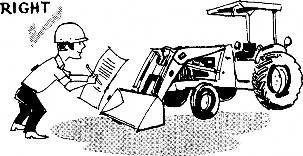
Carefully inspect equipment for visual defects leaks in fuel, lubrication, and hydraulic systems. Do not search for pressurized fluid leaks with your hands. Use cardboard or wood to search for leaks.
Conclusion:
Ensuring safety during maintenance activities is crucial to prevent accidents and injuries. By following established safety procedures, using the correct PPE, and maintaining a clean and organized work environment, workers can significantly reduce the risk of incidents. Regular training and awareness of potential hazards further contribute to a safer workplace

